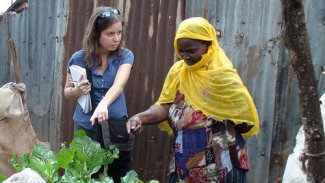 Our entry begins in Maralal, Kenya, a place mostly known for its wildlife. And as we made the seven hour, bumpy trek from Nairobi-half of it on unpaved roads-we saw our fair share of water buffaloes, rhinos, impala, and giraffes. But we weren’t here to go on safari. We were here to meet with a group of pastoralists-livestock keepers who had agreed to meet with us and talk about the challenges they face.
Our entry begins in Maralal, Kenya, a place mostly known for its wildlife. And as we made the seven hour, bumpy trek from Nairobi-half of it on unpaved roads-we saw our fair share of water buffaloes, rhinos, impala, and giraffes. But we weren’t here to go on safari. We were here to meet with a group of pastoralists-livestock keepers who had agreed to meet with us and talk about the challenges they face.
Although most of these people don’t have access to cable TV or even radios, they do have a good sense of the challenges their fellow livestock keepers face all over Kenya: climate change, conflict over land and water access, and a lack of support from policy makers and leaders. They also understand that the world is changing. They know that many of their children won’t live the same kind of lives that their ancestors lived for centuries. Many will choose to go to the cities, but they said if their children become “landed,” they want them to be able to maintain links to the pastoralist way of life.
During our visit to the “big city,” Nairobi, we met a “self help” group of women farmers in Kibera-likely the largest slum in sub-Saharan Africa with a population anywhere between 700,00 and one million-who are raising vegetables on what they call “vertical farms.” But instead of skyscrapers, these farms are in tall sacks, filled with dirt, and the women grow crops in them on different levels by poking holes in the bags and planting seeds.More than 1,000 of their neighbors are growing food in a similar way. During 2007 and 2008 when there was conflict in the slums of Nairobi and no food could come into these areas, most residents didn’t go without because so many of them were growing crops-in sacks, vacant land, or elsewhere.
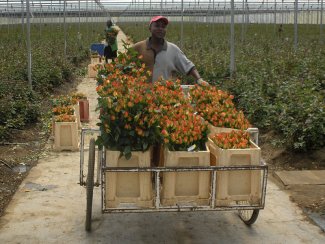 In Kerecho, Kenya we met with the Kenya Plantation and Agricultural Workers Union (KPAWU) and the Solidarity Center-an organization affiliated with the AFL-CIO that provides resources to hire organizers, conduct trainings, and offer communications and transportation support. The union, despite having more than 200,000 members in the agriculture sector, has still lost density over the last two decades. Companies are trying whatever they can to cut costs, including implementing child labor, and mechanizing the plucking industry.
In Kerecho, Kenya we met with the Kenya Plantation and Agricultural Workers Union (KPAWU) and the Solidarity Center-an organization affiliated with the AFL-CIO that provides resources to hire organizers, conduct trainings, and offer communications and transportation support. The union, despite having more than 200,000 members in the agriculture sector, has still lost density over the last two decades. Companies are trying whatever they can to cut costs, including implementing child labor, and mechanizing the plucking industry.
But the union, like all of the people and organizations we met in Kenya, is demonstrating its resiliency and fighting back. Despite the challenges it faces, over the past couple months it has grown, with 6,000 tea workers joining, thanks to organizing efforts supported by the Solidarity Center.
Who we are: BorderJumpers began in October 2009 in Addis Ababa, Ethiopia — when Bernard Pollack and Danielle Nierenberg began a journey to travel in Africa. At every stop they are meeting with farmers, community organizers, labor activists/leaders, non-governmental organization (NGOs), the funding and donor communities, and local, regional, and international press.
With a Sony handycam, a 8-year old laptop, and sporadic internet connections – their goal is to bring stories of hope from across the region to as large an audience as possible. They will tell the stories that aren’t being told-from oil workers fighting to have a union in Nigeria to innovative ways farmers and pastoralists are coping with climate change.

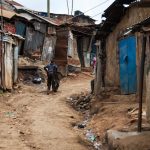
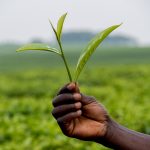
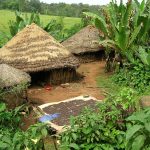



Leave a Reply